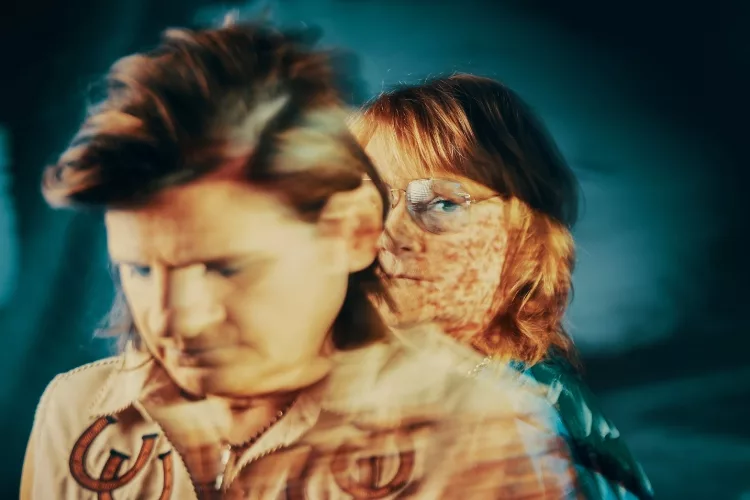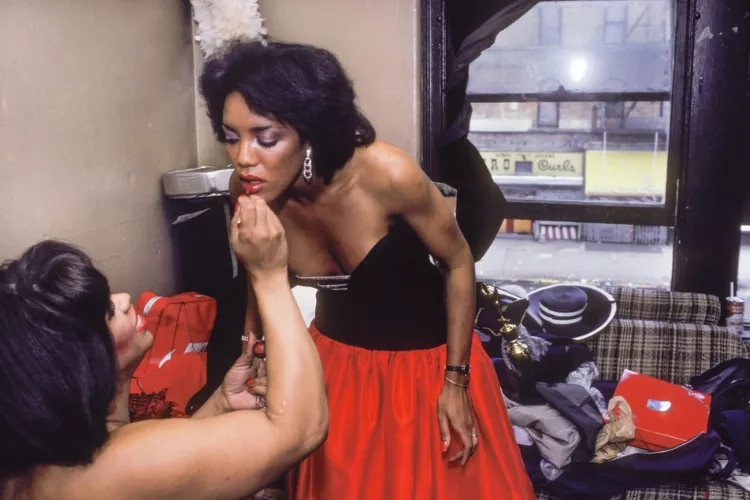Stitched into lightweight and carefree clothes for a curated, Cali-girl aesthetic is a dark story of sexism/misogyny, exploitation, and rabid consumption

It seemed innocuous enough when Brandy Melville’s Fifth Avenue store popped up one day out of nowhere. Its piles of heather gray tank tops and cutesy graphic t-shirts clashing with the edgier fashions worn by Parsons School of Design students right across the street. In contrast to The New School’s big, black, intensely geometric building on 13th Street, Brandy Melville’s corner nook was a teak-wood shelved, comfy clothes-stuffed surf shop. A Hollister-lite for casual Cali girls — of which I didn’t think there were many in New York. But given the company’s rapid growth and sales volumes, it seems I was wrong.
I’m not sure I ever even went inside. I was on my “no buying new clothes” commitment. An overproduction strike spurred by the massive piles of fabric scraps in every Parsons design room that got trashed at the end of every day. But as a curvy 25-year-old more interested in wacky oversized vintage than tight-fitting jeans and midriff-bearing tees that said silly things like “Happiness is expensive” or “I hate everyone” and “Stressed Depressed but Well Dressed,” I wasn’t the target audience.
HBO Documentaries has debuted its first-ever investigation into the many ills of fast fashion. Brandy Hellville & the Cult of Fast Fashion, directed by Eva Orner. It is an exposé into teen fashion brand Brandy Melville’s (BM) racist, predatory misogynistic, rampant Ayn Rand-endorsed approach to capitalism. It covers a lot of ground, from toxic size exclusivity to its founders’ preference for young, white women to the waste byproduct of over-consumption to Instagram marketing. It features voices of former BM executives alongside ethical fashion advocates like Textile Exchange CEO Claire Bergkamp, Remake founder Ayesha Barenblat, former Teen Vogue Fashion Editor and sustainable fashion journalist Alyssa Hardy. There are also former BM employees who were brave enough to tell their stories to help, as one puts it, “rip the veil off [the company’s] elitist aesthetics…”
The story’s presence on HBO confirms a growing public interest in the questionable practices of the fast fashion industry.


A new approach to the story of fast fashion
Last Week, No Kill Mag and I were invited to attend Remake and No.29 Communications’ group screening of the documentary. After the event, I spoke with Andrea Reyes, Executive Director of the NYC Fair Trade Coalition and professor at LIM College, about the film –which we both hope will provide a much-needed education to Melville’s target audience.
“The composition of the film really focuses on the perspective of exploited teenage girls,” remarked Reyes.
“Peppered in was the story of where our clothing ends up after it is disposed of but there was very little about how Brandy Melville’s clothing is actually made. This is something of a storytelling detour from many other documentaries that follow the way the clothing is made and how and who made it,” she says, referencing The True Cost as an example of a major motion picture that features the complete ethos of the fashion revolution.
Reyes called out the film’s focus on marketing ploys and design tactics.
“You get a sense like, ‘Wow, these girls are being exploited to do the modeling, the designing, and the marketing’…they’re sent to China to help with design for minimum wage and free clothing. And they didn’t even realize until later that they were being exploited, not until they outgrew the clothes,” she explains.
“They realized they were as disposable as the clothes they were wearing and throwing away.”
One Size Fits “Most”

Brandy Melville stands out in the teen fashion market, but perhaps not for the most commendable reason. In an era where inclusivity and body positivity are considered benchmarks of progress, BM starkly contrasts this trend by offering clothing exclusively in one petite size. Originally marketing its products under the audacious claim of “One Size Fits All,” the brand faced mounting criticism for its exclusionary practices. This backlash prompted a slight alteration in their slogan to “One Size Fits Most,” yet the change seems more cosmetic than substantial.
The sizing issue is starkly illustrated in a scene where a Brandy Melville shirt is compared to an infant’s and the specs match up. Such a comparison not only highlights the impracticality and exclusion inherent in their sizing policy but also underscores the broader issue of size discrimination, perpetuating a narrow and unrealistic standard of beauty that many find problematic.
Furthering this are viral “Brandy Melville challenges” encouraging young women to lose weight in order to fit into the brand’s looks.
As one store associate puts it, the brand’s marketing advances a “how small can you be” mentality, promoting and glamorizing eating disorders.
A sped-up carousel of the torsos of skinny, white, tanned, flat-tummied women spans the scene. There is no diversity in size — or color. It was, and is, a known fact that store associates of color were kept in the back rooms, while white girls who represented the CEO’s ideals and ethos are up front on display.
And if fat shaming and racism weren’t enough, the documentary unveils incidents concerning exploitation and actual assault. The shadowy CEO Stephan Marsan daily required store associates to be photographed full-body, and their images sent to him for approval. The associates do not know where these photos live and were admonished when asked what purpose these full-body photos served.
Brandy Melville CEO Stephan Marsan’s persona and company are reminiscent of old Abercrombie and Fitch catalogs which many likened to porn (whose former CEO is currently under FBI inquiry for alleged sex crimes) and to Dov Charney of American Apparel, LA’s other seedy, sexually abusive fast fashion mogul.
Why is This kind of discrimination and exploitation still happening?

Similar to American Apparel, the employees of BM seem to be both victims and perpetrators of an unhealthy culture. On one hand, both the employees and consumers could be seen as victims of the brand’s targeted marketing strategies, which exploit their insecurities and desire to fit in. On the other hand, there’s an argument to be made about their role as contributors to the ongoing problem of fast fashion.
Furthermore, it’s challenging to feel sympathy for the “Mean Girls” archetype—those who are popular and thrive on the attention from Instagram hauls and the accolades that follow. By spotlighting the popular girls, Brandy Hellville suggests that significant change could be driven by them opting for more sustainable consumption practices.
Alongside these answers, one thing is certain: the well-being of thousands of young women (including, we may add, the garment workers who work for pennies to produce BM’s constant new fast fashion styles) has been dismantled by an elusive puppeteer of a male CEO, who behind the scenes endorsed racism and antisemitism while grossing $3 trillion and avoiding taxes in the name of libertarianism.
Customer Cult: The Brandy Melville lifestyle is an Instagram First lifestyle

In 2014, Bloomberg lauded Brandy Melville as Instagram’s first retail success. BM capitalized on this new, digital-fueled fast fashion behavior. Instagram is rife with Brandy Melville Hauls, in which girls show the world their big pile of new things. It feeds into our compulsion to hoard garments without thinking — the “adrenaline rush” of hoarding, Alyssa Hardy calls it. Instagram fuels this need for constant consumption, which in turn fuels textile waste. This leads to Accra, Ghana, where piles of clothes end up in massive mounds on the city’s beaches due to the overflowing secondhand clothing trade.
BM hired social media-savvy sales associates who ensured their stores were the place to be and be seen. An anonymous Melville executive shared how girls were waiting in a line 10 blocks long at the opening of a Toronto location. “This is success,” they marveled.
This success was fueled by Instagram. And so long as teenagers live on social, the photographic image or video is their raison d’etre. BM designs exist and are worn for the click, the like, and the comment. The Brandy Melville social feed and community produced (and still produces) a cult-ish culture of skinny girls in constantly new outfits. A culture which undoubtedly feeds the statistics of increased depression in young adults.
Overarchingly, this is the fast fashion lifestyle: clothes for the ‘gram, garments, and “fits” as fleeting as the flick of a thumb over an Instagram scroll.
Of course, BM doesn’t pay for this extra promotional work. Its employees accept minimum wage, influencers accept payment in clothes, and its customers pay in cash; otherwise, everyone accepts the tenuous payment that is a residual social media Like. While Brandy Melville execs are paid in the trillions, its associates and collaborators were paid in vacuous, pixelated digital affirmation. This deposit cannot make up for the debt of bodily exploitation in photographs, over-consumption, and image-conscious weight insecurity.
–Anne Elizabeth Whiting
Related Articles
- Stitched in Scandal: Dissecting Kate Flannery’s Tell-All on American Apparel’s Controversial Legacy
- Influencers need to stop Fast Fashion Hauls
- You Deserve Better Than Fast Fashion: An Interview with Amanda of Clotheshorse Podcast
- Vestiaire Collective’s Bold Move: Banning 30+ Fast-Fashion Brands to Promote Sustainable Luxury Resale
- Tune in to our top podcasts on fashion + sustainability






